
Are you a gardening enthusiast looking to maximize your vegetable yields and extend your growing season? If so, you’re in luck! In this article, we’ll explore the top vegetables that thrive in a greenhouse environment. By harnessing the power of controlled conditions and providing protection from harsh weather, you can enjoy a bountiful harvest all year round. So grab your gardening gloves and get ready to discover the perfect vegetables to cultivate in your very own greenhouse oasis.
Top Vegetables to Grow in a Greenhouse
Having a greenhouse can be a fantastic way to extend the growing season and produce a bountiful harvest of fresh vegetables. When it comes to choosing which vegetables to grow in your greenhouse, there are several factors to consider, such as the types of vegetables that thrive in the greenhouse environment, their growing conditions, and how to care for them. In this article, we will explore some of the top vegetables to grow in a greenhouse and provide you with valuable tips on how to successfully cultivate them.
Tomatoes
Tomatoes are undoubtedly one of the most popular greenhouse vegetables, and with good reason. They are relatively easy to grow, produce a high yield, and are incredibly versatile in the kitchen. There are various types of tomatoes to choose from, including cherry tomatoes, beefsteak tomatoes, and heirloom varieties.
To start growing tomatoes in your greenhouse, you can either purchase young plants or sow seeds indoors and transplant them later. When selecting tomato varieties, consider factors such as disease resistance, fruit size, and taste. Some popular varieties for greenhouse cultivation include ‘Sun Gold,’ ‘Brandywine,’ and ‘San Marzano.’
For optimal growth, tomatoes require well-drained soil, ample sunlight, and consistent watering. It is essential to provide proper support for your tomato plants by using trellises, stakes, or cages. This helps keep the plants upright and prevents the fruits from touching the ground, reducing the risk of rot or disease.
Pests and diseases can pose a challenge when growing tomatoes in a greenhouse. Common pests include aphids, whiteflies, and tomato hornworms. Implementing good sanitation practices, such as removing any dead leaves or debris, can help prevent the spread of diseases like blight and powdery mildew. Regularly inspecting your plants and promptly treating any pest or disease issues will ensure a vigorous tomato crop.
When it comes to harvesting tomatoes, wait until the fruits reach their desired ripeness. Gently twist or cut the tomatoes from the vine to avoid damaging the plant. Greenhouse-grown tomatoes tend to have excellent flavor and are perfect for fresh salads, sauces, or even sun-dried tomatoes.
Cucumbers
Cucumbers are another fantastic vegetable to cultivate in a greenhouse. They are known for their refreshing taste, crunchy texture, and versatility in various culinary dishes. Growing cucumbers in a controlled environment allows for optimal conditions and a prolonged harvest season.
When choosing cucumber varieties, consider whether you want slicing cucumbers or pickling cucumbers. Popular slicing cucumber varieties for greenhouse cultivation include ‘Telegraph Improved,’ ‘Marketmore,’ and ‘Poinsett.’ For pickling cucumbers, ‘National Pickling’ and ‘Boston Pickling’ are excellent choices.
Cucumbers require warm temperatures and plenty of sunlight to thrive. Maintaining a temperature of around 70-75°F (21-24°C) during the day and slightly cooler at night will provide optimal conditions for your cucumber plants. Adequate air circulation is also crucial to prevent the development of fungal diseases.
Training and supporting your cucumber plants are essential for maximizing space and encouraging upward growth. You can use trellises or vertical supports to guide the vines and prevent them from sprawling on the ground. This also helps improve air circulation and makes pruning and harvesting easier.
Pests such as aphids, cucumber beetles, and spider mites can be a concern when growing cucumbers in a greenhouse. Regularly inspecting your plants and using organic insecticides or insecticidal soap can help control these pests. Also, be cautious of diseases such as powdery mildew and downy mildew, as these can affect cucumber plants. Proper ventilation and removing any infected foliage can help prevent the spread of these diseases.
When cucumbers are ready for harvesting, they should be firm and their color should match the variety. Use a sharp knife or garden scissors to cut the cucumbers from the vine. Fresh cucumbers are delightful in salads, sandwiches, and even as a refreshing snack.
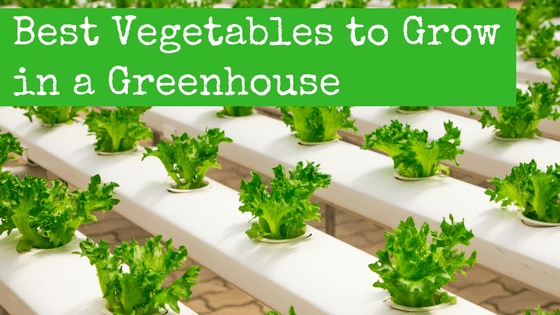
This image is property of www.backdoorsurvival.com.
Peppers
Peppers are a vibrant and flavorful addition to any greenhouse garden. With a wide array of colors, shapes, and heat levels, peppers offer endless culinary possibilities. From sweet bell peppers to spicy jalapeños, there is a pepper variety to suit every taste preference.
When selecting pepper varieties for your greenhouse, consider factors such as fruit size, flavor, and spiciness. Popular sweet pepper varieties for greenhouse cultivation include ‘California Wonder,’ ‘Sweet Banana,’ and ‘Cubanelle.’ If you fancy some heat, consider growing jalapeños, habaneros, or cayenne peppers.
Peppers thrive in warm and sunny conditions. Maintaining a temperature of around 75-85°F (24-29°C) during the day and slightly cooler at night will provide ideal growing conditions. It is essential to ensure that your pepper plants receive at least 6-8 hours of sunlight daily.
Unlike tomatoes and cucumbers, peppers are primarily self-pollinating, but providing them with gentle air movement can aid in pollination. You can gently shake the plants or use a small fan to simulate wind and encourage pollen transfer. This can help ensure a bountiful harvest of peppers.
Maintaining proper nutrient levels is crucial for pepper plants to thrive. Fertilize regularly with a balanced fertilizer, paying attention to the macronutrients nitrogen (N), phosphorus (P), and potassium (K). This will promote healthy growth and abundant fruit production.
Common pepper pests include aphids, pepper weevils, and flea beetles. Regularly inspect your plants for any signs of infestation and employ organic pest control methods if necessary. Diseases such as bacterial spot and blossom end rot can also affect pepper plants. Providing good air circulation and avoiding excess moisture will help prevent these issues.
When it comes time to harvest your peppers, wait until the fruits have reached their desired size and color. Use garden shears or a sharp knife to cut the peppers from the plant. Whether you use them fresh in salads, sauté them in dishes, or pickle them, homegrown peppers add a wonderful touch of flavor and heat to your meals.
Lettuce
Lettuce is a staple vegetable in many kitchens, and growing it in a greenhouse ensures a constant supply of fresh and crisp leaves. With a multitude of lettuce varieties to choose from, you can enjoy a diverse range of textures, colors, and flavors.
When selecting lettuce varieties for greenhouse cultivation, consider whether you prefer loose-leaf lettuces or head lettuces. Some popular greenhouse-friendly lettuces include ‘Buttercrunch,’ ‘Red Oak Leaf,’ ‘Romaine,’ and ‘Lollo Rosso.’
To start growing lettuce, sow the seeds directly into containers or trays filled with a well-draining potting mix. Lettuce prefers cooler temperatures, so you may need to provide shade or use reflective materials to avoid excessive heat during the summer months.
Temperature and humidity control are crucial for optimal lettuce growth. Lettuce thrives in temperatures between 45-75°F (7-24°C). High humidity can invite fungal diseases, so ensure adequate airflow and ventilation to prevent issues like damping off or powdery mildew.
Water your lettuce plants regularly to maintain evenly moist soil. Avoid overwatering, as this can lead to rot or fungal diseases. Applying a balanced liquid fertilizer every few weeks will provide the necessary nutrients for healthy growth.
Lettuce is generally not prone to many pests or diseases when grown in a greenhouse. However, watch out for slugs, snails, and aphids. Effective pest control methods include handpicking pests or using organic insecticides. Additionally, good sanitation practices such as removing any dead plant material can help prevent disease outbreaks.
When your lettuce leaves have reached the desired size, you can begin harvesting. Cut the outer leaves first, leaving the center intact to allow for further growth. Freshly picked lettuce leaves are perfect for salads, sandwiches, and wraps, adding a delightful crunch and refreshing flavor to your dishes.
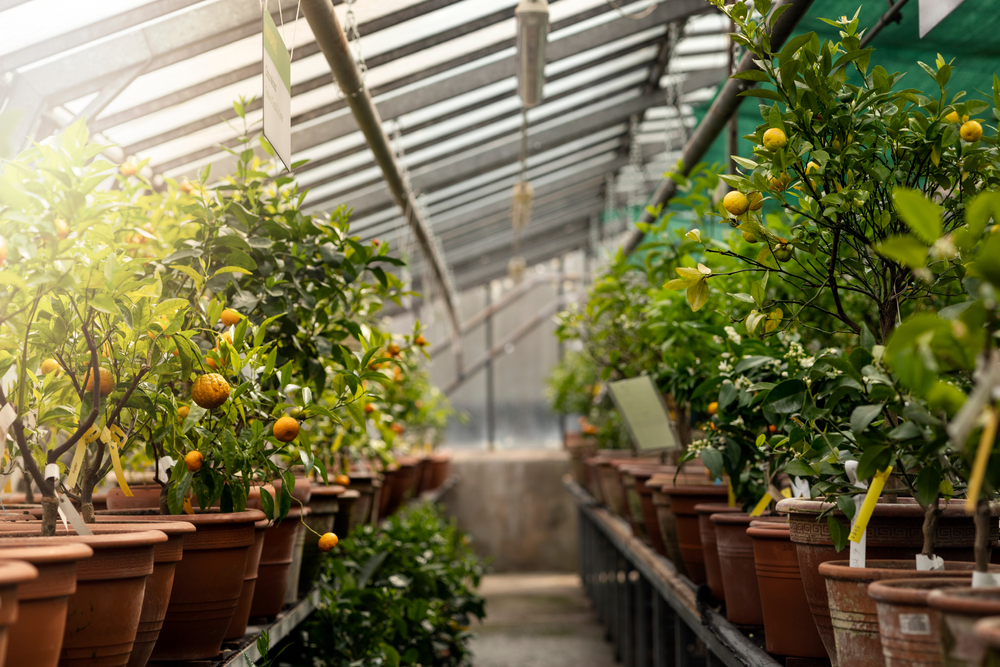
This image is property of modernfarmer.com.
Spinach
Spinach is a nutrient-packed leafy green vegetable that thrives in a greenhouse environment. With its rich iron content and versatility in various dishes, growing your own spinach can be both rewarding and nutritious.
When choosing spinach varieties for your greenhouse, look for those that are specifically labeled as suitable for greenhouse cultivation. Popular greenhouse spinach varieties include ‘Bloomsdale’ and ‘Giant Noble.’
Spinach prefers cool temperatures and shade from direct sunlight. A temperature range of 50-70°F (10-21°C) is ideal for successful spinach growth. Be mindful that spinach tends to bolt or go to seed quickly in hot weather, so plan your seeding accordingly.
Preparing the soil adequately is essential for spinach cultivation. Remove any weeds or debris, and work in well-rotted compost or organic matter to improve soil structure and fertility. Sow spinach seeds directly into the prepared soil, spacing them according to the variety’s specific recommendations.
Spinach requires moderate to high light levels for good growth. Providing around 12-14 hours of light per day will help ensure healthy leaf production. Supplemental lighting may be necessary during the winter months when natural daylight is limited.
Pests such as aphids, leaf miners, and slugs can occasionally affect spinach plants. Regularly inspecting your plants and using organic pest control methods when necessary will help keep these pests at bay. Weed control is also crucial, as weeds can compete with spinach for nutrients and water.
When your spinach leaves have reached a suitable size, typically around 4-6 inches (10-15 cm) long, you can begin to harvest. Pick the outer leaves first, allowing the inner leaves to continue growing. Fresh spinach can be enjoyed raw in salads, sautéed as a side dish, or used as a nutritious addition to smoothies and juices.
Radishes
Radishes are quick-growing and rewarding vegetables that are well-suited for greenhouse cultivation. With their crisp texture and peppery flavor, radishes add a delightful bite to salads, sandwiches, and many other dishes.
When it comes to radishes, there are various types to choose from, each with its unique size, shape, and flavor profile. Some popular radish varieties to consider for your greenhouse include ‘Cherry Belle,’ ‘French Breakfast,’ and ‘Watermelon.’
Radishes are relatively easy to grow, making them an excellent choice for beginners. Sow the radish seeds directly into the prepared soil, following the specific spacing recommendations for the chosen variety. Radishes thrive in well-drained soil with a pH range of 5.5-6.8.
Water your radish plants consistently to ensure that the soil remains evenly moist. Overwatering can cause the radishes to become pithy or split. Fertilize sparingly, as excessive nitrogen can result in leafy growth instead of well-formed radishes.
Radishes are typically not prone to many pests or diseases, especially when grown in a greenhouse environment. However, keep an eye out for aphids, flea beetles, and root maggots. Using organic pest control methods and maintaining good sanitation practices will help prevent infestations.
When the radishes have reached maturity, generally within 20-30 days, you can begin harvesting them. Gently pull or use a small garden fork to loosen the soil around the radishes and lift them out of the ground. Freshly harvested radishes can be enjoyed raw, pickled, or added to various culinary creations.
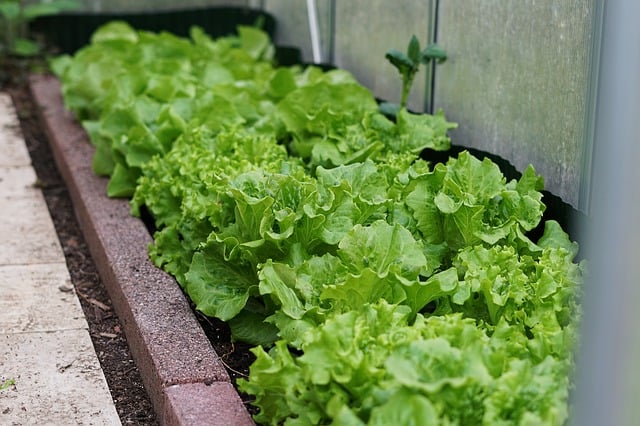
This image is property of i0.wp.com.
Green Beans
Green beans, also known as snap beans or string beans, are a versatile and productive vegetable that can thrive in a greenhouse setting. With an abundance of delicious pods, green beans are a popular choice for both beginner and seasoned gardeners.
When it comes to green beans, you have two main options: bush beans or pole beans. Bush beans are compact and do not require support, making them suitable for small greenhouses. Pole beans, on the other hand, are vining plants that benefit from trellising or support structures.
Sow green bean seeds directly into the prepared soil, following the recommended spacing for the chosen variety. Green beans require well-drained soil and appreciate full sun for at least 6-8 hours a day. The optimal soil temperature for germination is around 65°F (18°C).
Support and training methods differ depending on whether you are growing bush beans or pole beans. Bush beans will generally grow and support themselves without additional help. However, pole beans require trellises or poles for the vines to climb. Providing sturdy support will not only keep the vines upright but also make harvesting much easier.
Although green beans are relatively pest and disease resistant, there are still some common issues to watch out for. Aphids, whiteflies, and leaf miners can occasionally affect green bean plants. Regularly inspect your plants and use organic pest control methods when necessary. Good sanitation practices, such as removing any infected or damaged foliage, will help prevent the spread of diseases.
When it’s time to harvest your green beans, pick the pods when they are young and tender. Avoid letting them become overly mature, as the beans will become tough and stringy. Simply snap off the beans from the vine or use garden shears. Enjoy fresh green beans in stir-fries, steamed dishes, or as a tasty side dish.
Zucchini
Zucchini is a prolific and fast-growing vegetable that can thrive in the controlled environment of a greenhouse. With their tender flesh and mild flavor, zucchinis are a versatile ingredient in a variety of culinary dishes.
When choosing zucchini varieties for your greenhouse, consider the space available and whether you prefer compact or vining plants. Popular compact zucchini varieties suitable for greenhouse cultivation include ‘Raven,’ ‘Patio Star,’ and ‘Astia.’ If you have enough space, vining varieties such as ‘Black Beauty’ and ‘Costata Romanesco’ can also be grown.
Plant zucchini seeds directly into containers or prepared soil, ensuring they are spaced according to the variety’s specific recommendations. Zucchinis prefer well-drained soil enriched with organic matter. Maintain a temperature between 70-85°F (21-29°C) for optimal growth.
Water your zucchini plants consistently to keep the soil moist but not waterlogged. During hot weather, zucchinis may require more frequent watering. Fertilize regularly with a balanced organic fertilizer to provide necessary nutrients for healthy growth and fruit production.
Zucchinis can be susceptible to pests such as aphids, squash bugs, and spider mites. Regularly inspect your plants and apply organic pest control methods as needed. Powdery mildew is a common disease that affects zucchinis. Good air circulation and adequate spacing between plants can help minimize this issue.
When your zucchinis are ready to harvest, pick them when they are small to medium-sized. Larger zucchinis can become tough and flavorless. Use a sharp knife or garden shears to cut the zucchinis from the plant. Zucchinis can be enjoyed in stir-fries, grilled, sautéed, or even baked into delicious breads and cakes.
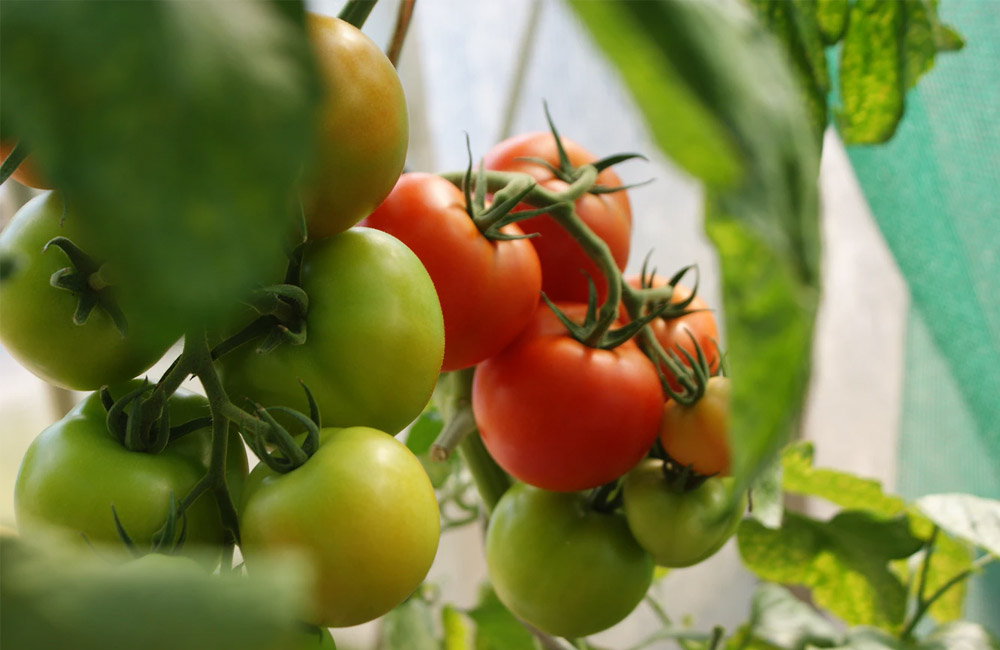
This image is property of www.swgreenhouses.co.uk.
Carrots
Carrots are a nutritious and versatile root vegetable that can thrive in a greenhouse environment. With their vibrant colors and sweet flavor, homegrown carrots are a delicious addition to salads, soups, and many other dishes.
When selecting carrot varieties for your greenhouse, consider whether you prefer standard or baby carrot varieties. Some popular standard carrot varieties for greenhouse cultivation include ‘Nantes,’ ‘Scarlet Nantes,’ and ‘Chantenay.’ For baby carrot options, ‘Little Finger’ and ‘Tiny Sweet’ are excellent choices.
Carrots require well-drained soil with a loose texture to allow for straight root development. Sow carrot seeds directly into the prepared soil, ensuring they are spaced according to the variety’s specific recommendations. Carrots prefer a soil pH range of 6.0-6.8.
Ensure consistent soil moisture during the germination period, as carrots need moisture to sprout. Once the seedlings emerge, gradually reduce watering frequency to prevent root rot. Avoid overwatering, as this can cause the roots to crack or split.
Carrots are generally relatively pest and disease resistant when grown in a greenhouse. However, watch out for pests like carrot rust flies and aphids. Applying floating row covers can help protect young carrot plants from pests. Diseases such as root rot and powdery mildew can occasionally affect carrots. Good airflow and proper moisture levels will help prevent these issues.
When your carrots have reached the desired size, typically around 2-3 months after planting, you can begin harvesting. Gently loosen the soil around the carrots using a garden fork or trowel and lift out the roots. Freshly harvested carrots can be enjoyed raw, steamed, roasted, or even used in baking.
Herbs
Herbs are a fantastic addition to any greenhouse garden. They not only provide flavorful touches to culinary dishes but also offer various medicinal and aromatic properties. Growing herbs in a controlled environment ensures a continuous supply of fresh herbs year-round.
When choosing herbs for greenhouse cultivation, consider your personal preferences and which herbs you frequently use in your cooking. Some popular herbs for greenhouse cultivation include basil, mint, parsley, rosemary, thyme, and oregano.
Different herbs have varying requirements when it comes to growing conditions and lighting. However, most herbs thrive in well-drained soil, ample sunlight, and appropriate temperature ranges. Consult specific growing guides for each herb to ensure you provide the optimal conditions.
Herbs can be harvested at different times depending on their growth habit and intended use. For leafy herbs like basil and parsley, you can begin harvesting when the plants have grown enough leaves. With woody herbs like rosemary and thyme, you can trim off sprigs as needed but be careful not to remove too much foliage at once.
Harvesting herbs is a simple process. Gently pinch or cut off the desired amount of leaves or stems using garden shears or your fingers. To encourage robust growth, avoid removing excessive foliage at once, especially for slower-growing herbs like rosemary.
Once harvested, herbs can be used fresh, dried for later use, or preserved in other ways such as freezing or making herb-infused oils or vinegars. Whether you use them in cooking, teas, or homemade beauty products, greenhouse-grown herbs offer a delightful and aromatic experience.
In conclusion, growing vegetables in a greenhouse allows you to have a year-round supply of fresh and flavorful produce. From tomatoes and cucumbers to peppers and herbs, the possibilities are endless. By carefully selecting the right varieties and providing optimal growing conditions, you can enjoy a thriving greenhouse garden filled with a diverse array of vegetables. Follow the tips and techniques outlined in this article, and soon you’ll be harvesting a bountiful crop of delicious and nutritious vegetables from your very own greenhouse. Happy growing!
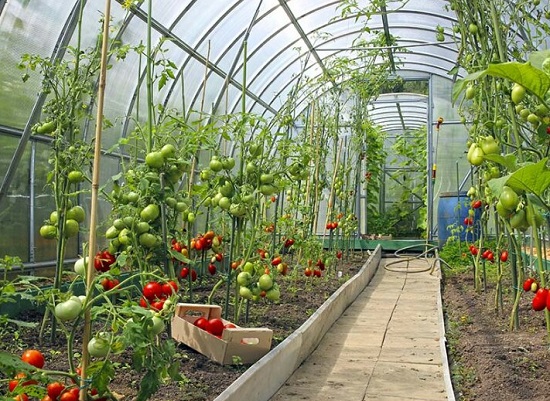
This image is property of ogden_images.s3.amazonaws.com.

